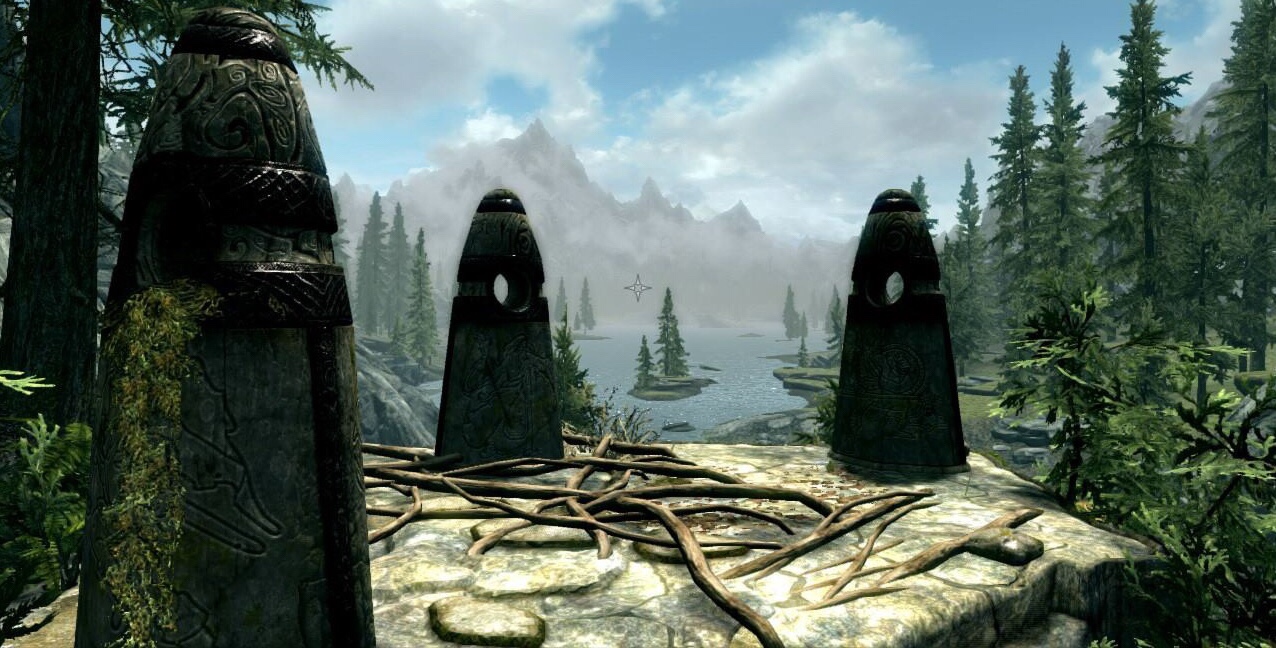
In Skyrim, one of the first game mechanics you’re introduced to after the initial tutorial quest is the Standing Stone. By using a Standing Stone, the player character gains bonuses to certain traits and/or extra abilities. However, a player character can only receive one “blessing” at a time – if another Standing Stone is chosen, the first bonus will be replaced by the new one (although there is an object. the Aetherial Crown, introduced later in the Dawnguard DLC that allows for two “blessings” at once).

In the lore of Skyrim (Bethesda Game Studios 2011), these Standing Stones are magical features in the landscape that have the ability to “rewrite the Fate” of heroes if used. There are thirteen in total, each correlating with one of the Tamrielic constellations: the Warrior, the Mage, the Thief, the Serpent, the Apprentice, the Lord, the Lady, the Atronach, the Lover, the Ritual, the Shadow, the Tower, and the Steed. These constellations are also known as the “Birth Signs”, similar to real life astrological signs. In the previous game, Elder Scrolls IV: Oblivion (Bethesda Game Studios 2006), there are similar archaeological features dotting the landscape of Cyrodil with similar powers, but are called “Doomstones” instead.

It’s likely that the in-game Standing Stones are based off of the real world archaeological features that can be found at many sites around the world. Some of the best known ones can be found in the Orkney Islands, Scotland: the Standing Stones of Stenness (see above photo), the Ring of Brodgar, and the Odin Stone (unfortunately no longer standing).
Although the exact reasons for the construction of these Standing Stone monuments are unclear, they are usually associated with concepts of ritual, ceremony, and cosmology. Orkney’s Standing Stones, for example, have been observed to be relatively close to one another and also in close proximity to another Neolithic site, the Maeshowe tomb. This has been used as evidence that this area that encompasses all three archaeological sites was most likely important to the Neolithic inhabitants of Orkney. Some archaeologists have suggested that the Standing Stones are all that remains of a more intricate ritual area – Colin Richards (1996) has posited that these sites could have also had trenches of water to serve as places of liminality or transitioning, as well as connecting the cosmological beliefs of the Neolithic inhabitants with their own island environment.
Even after the Neolithic, later Scottish folklore and tradition still focused on these archaeological monuments. For example, the Odin Stone was used in ceremonies of marriage prior to its destruction. Other folklore suggests that Standing Stones were meeting places for supernatural creatures, such as fairies – this led to a tradition of leaving milk and other treats at these sites to appease these creatures (Gazin-Scwartz 2001). And even today, the Standing Stones are still seen as points of magic and wonder, especially within neo-pagan covens – perhaps these stones simply reflect a deep, human reaction of awe and mystery that still survives to this very day. So much so that they’ve ultimately inspired the magic and fantasy of Skyrim.
References
Anonymous. (2016) Standing Stones. Elder Scrolls Wikia. http://elderscrolls.wikia.com/wiki/Standing_Stones?useskin=oasis
Bethesda Game Studios. (2006) The Elder Scrolls IV: Oblivion.
Bethesda Game Studios. (2011) The Elder Scrolls V: Skyrim.
Gazin-Schwartz, A. (2001) Archaeology and Folklore in Material Culture, Ritual, and Everyday Life. International Journal of Historical Archaeology (Vol. 5, No. 4).
Richards, C. (1996) Monuments as Landscape: Creating the Centre of the World in Late Neolithic. World Archaeology (Vol. 28, No. 2).
If you’re financially stable enough, why not donate to help out marginalised archaeologists in need via the Black Trowel Collective Microgrants? You can subscribe to their Patreon to become a monthly donor, or do a one-time donation via PayPal.
My work and independent research is supported almost entirely by the generosity of readers – if you’re interested in contributing a tiny bit, you can donate here.
